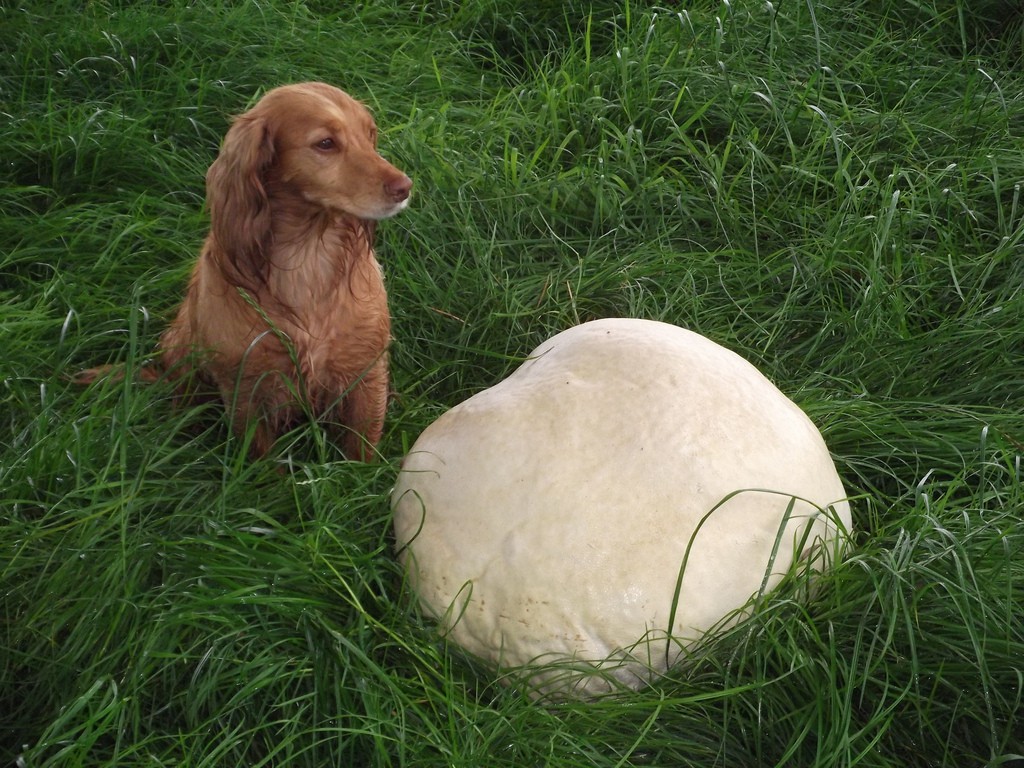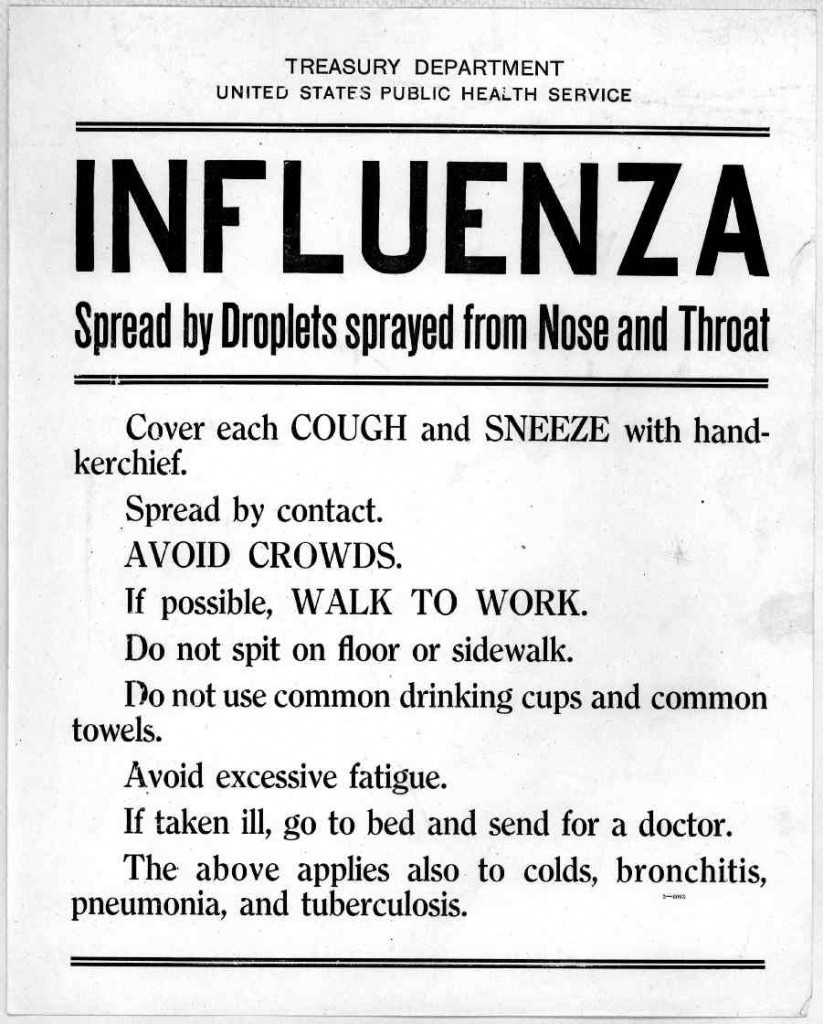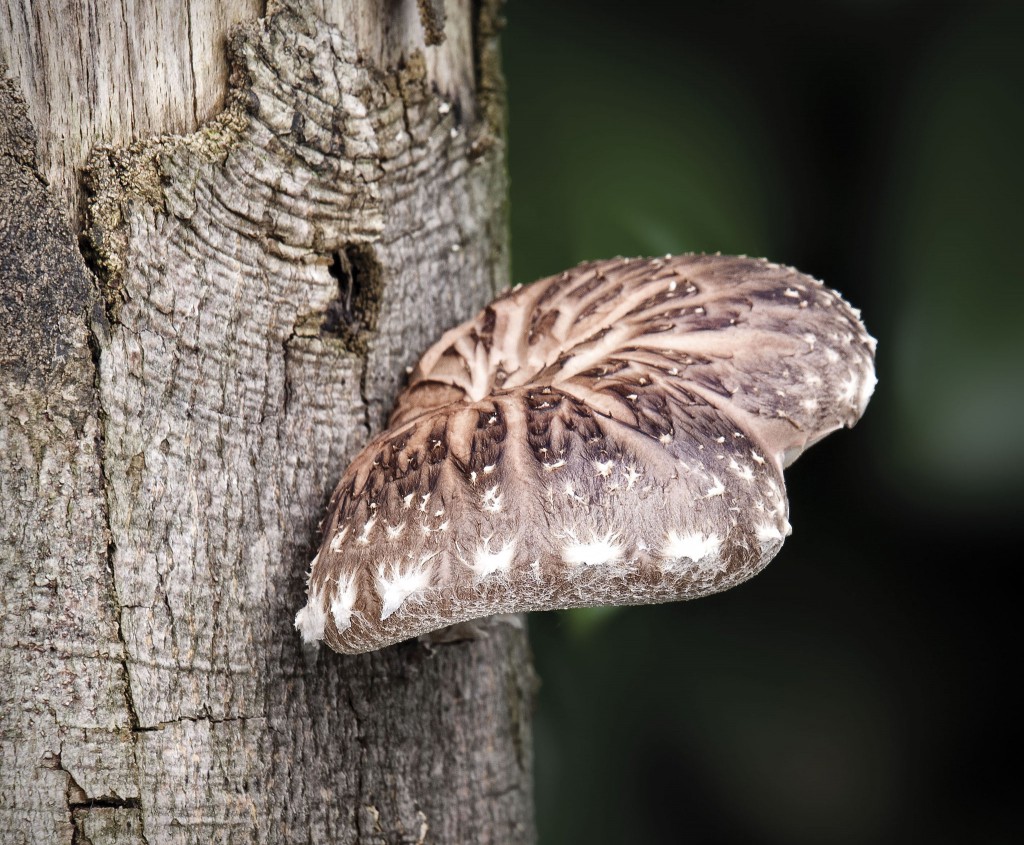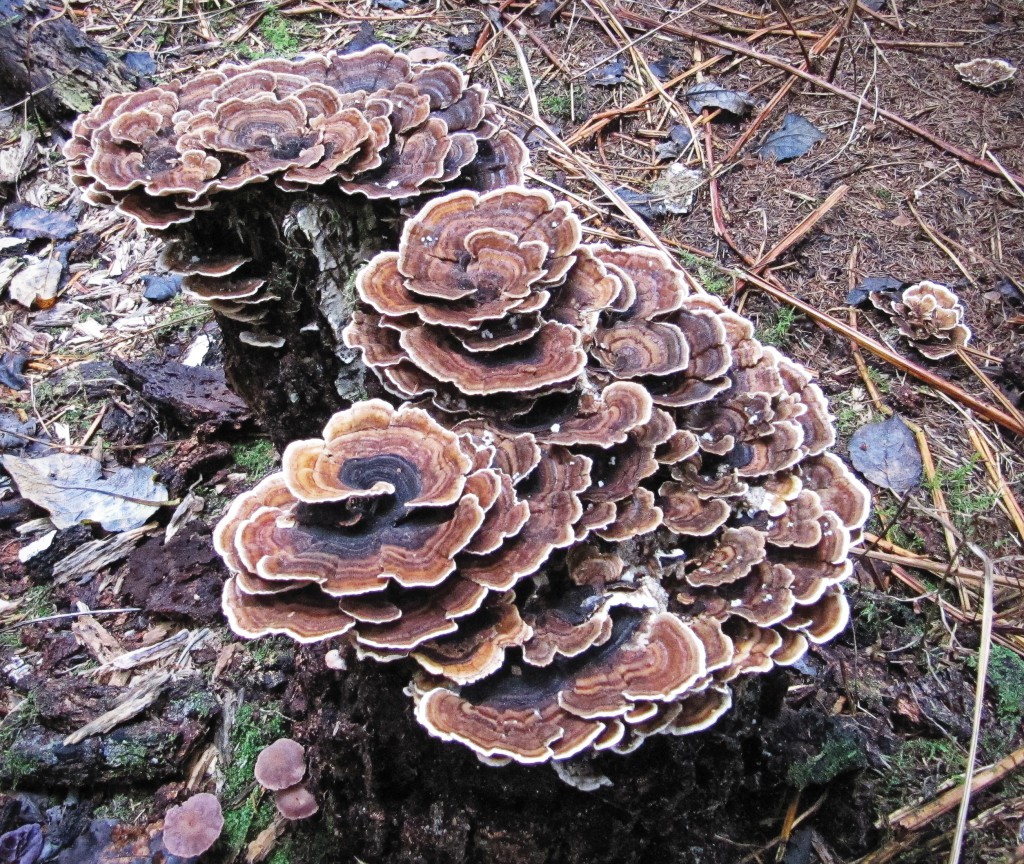Antiviral Effects of Mushrooms: Research Overview
Most research on the health benefits of medicinal mushrooms focused on cancer, but in traditional medicine they were also used to prevent, alleviate, and treat viral infections. As we will see, antiviral and anticancer effects of mushrooms overlap; mushrooms enhance the immune response which affects cancer and viruses.
In the 1950s, Cochran and Lucas investigated the antiviral effects of medicinal mushrooms: they found that Calvatia gigantea (giant puffball) and Agaricus campestris (meadow mushroom) protect mice from poliomyelitis virus.

Calvatia gigantea contains calvacine, a compound with strong anticancer and antiviral activity (but cannot be used since it causes unacceptable side effects).
In 1966, Cochran et al. discovered that Boletus edulis (king bolete, porcini), Calvatia gigantea (giant puffball), Suillus luteus (Slippery Jack), Lentinus edodes (shiitake), and Piptoporus betulinus (birch polypore) effectively fight the flu-causing influenza viruses.
The Japanese scientists focused on the flu and, of course, on shiitake:
- In the mid-1970s, Yamamura and Cochran isolated the active compound AC2P, which inhibits Orthomyxoviridae. Orthomyxoviruses is a family of RNA viruses that includes 3 genera of Influenza virus, which include all human, avian and swine influenza viruses; Isaviruses, which causes losses in salmon farming; Thogotoviruses and Quaranjaviruses which can be transmitted by ticks and mosquitoes.
- Mori found particles that increase secretion of human interferons, i.e. the body reacts to them as if they were of viral origin and boosts the immune system response.
- Suzuki et al. discovered that RNA found in shiitake spores stimulates interferon production. Also, shiitake mushroom mycelia extract contains KS-2, which helps prevent and treat the flu.
The research focus on the flu and the value of these discoveries is evident when we consider the magnitude of the problem. Seasonal flu epidemics and occasional pandemics (worldwide epidemic) – with already known strains or new, emerging ones, like bird and swine flu – infect a large proportion of the human population, result in 3-5 million cases of severe illness, and cause 250,000-500,000 deaths every year. In the 20th century three influenza pandemics occurred: the Spanish influenza in 1918, Asian influenza in 1958, and Hong Kong influenza in 1968, each resulting in more than a million deaths. The 1918 Spanish influenza was one of the deadliest natural disasters in human history: it infected 500 million people and killed 50-100 million (3-5% of the entire human population at the time).

The focus from the flu, however, has shifted since the AIDS epidemic declared in 1981 and the discovery of the HIV virus in 1983.
Dr. Tadao Aoki reported in 1983 of a 57-year old HIV-positive woman treated with lentinan. The woman was a breast cancer patient who was probably infected through blood transfusion during the surgery. At the time, she was treated with lentinan for cancer. After a 5-month treatment, she became HIV negative, the number of T helper lymphocyte cells (CD4 T-cells) greatly improved, while the activity of natural killer (NK) cells increased from 36% to 80.8%. Three years later, she was still healthy and needed no further medical treatment.
Dr. Aoki described the antiviral activity of lentinan on HIV patients at the 3rd International Conference on Immunopharmacology in Florence, Italy in 1985. He emphasized that patients often feel healthy after only 2 weeks, but the symptoms nearly always return, if lentinan is not used for a least 6 months.

By late 1980s Tochikura, Nakashima and Yamamoto from the University of Yamaguchi found effective agents against four strains of HIV-1 and one strain of HIV-2. They found that lentinan sulphate blocks HIV cell to cell infection 85.9% – 96.9%. The extract of shiitake mycelium (LEM) inhibits cell-to-cell infection at similar rates, and so does PSK from the medicinal mushroom Trametes versicolor (= Coriolus versicolor, Turkey Tail). This is in sharp contrast to the effectiveness of AZT (zidovudine, azidothymidine, brand name: Retrovir) – the first official antiretroviral drug for HIV/AIDS – which inhibits cell-to-cell transmission by only 2.8-10.2%. However, AZT is still used; and there are no anti-HIV drugs from medicinal mushrooms. Tochikura, Nakashima, and Yamamoto published these results in 1989 in the Journal of AIDS (JAIDS) (Wolters Kluwer, New York).

Antiviral drugs should be combined with lentinan (and other active mushroom compounds). For example, Kaneko found that lentinan and AZT used together inhibit HIV 5-24 times more effectively than AZT alone (depending on strain of virus).
PSK (from Trametes versicolor) also inhibits HIV infection by modifying viral receptors and preventing the adhesion of the virus to lymphocytes. Additionally, PSK stimulates interferon production, which has a general antiviral effect.
In the late 1980, Dharmananda and B. K. Kim reported that Ganoderma lucidum polysaccharides help seropositive patients.
Concurrently, several American physicians reported improvements in patients with Kaposi’s sarcoma and other AIDS related symptoms after using Grifola frondosa (maitake, hen of the woods) extract.
Image sources: Flickr (Norman Mackenzie – Calvatia gigantea), Getty Images (flu poster)
